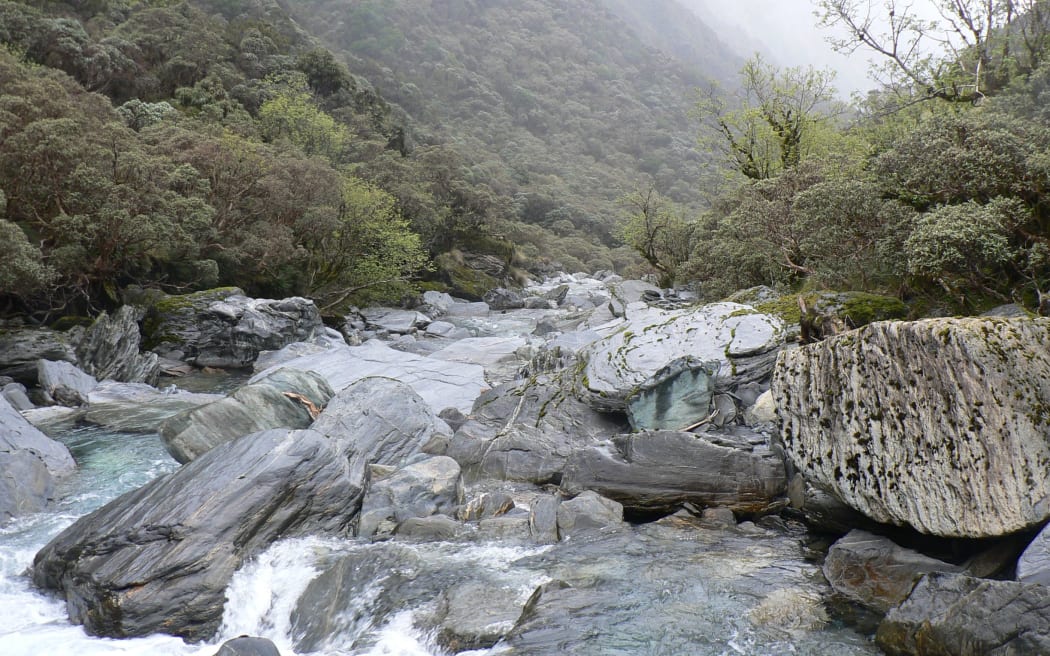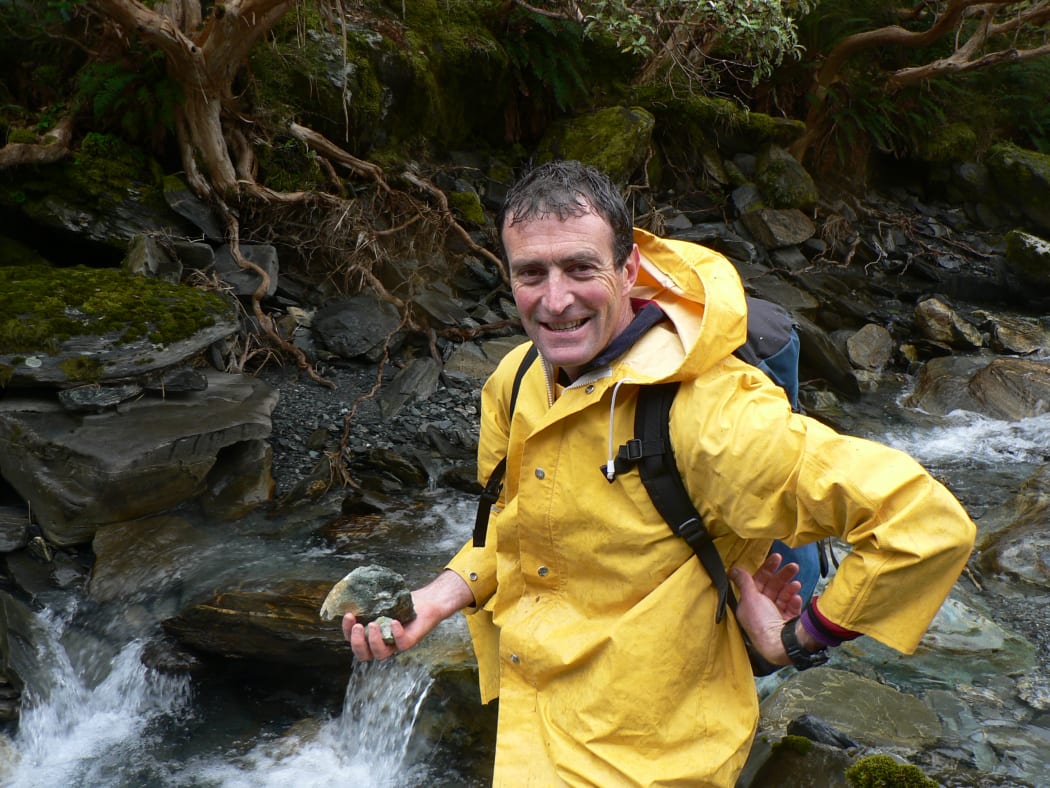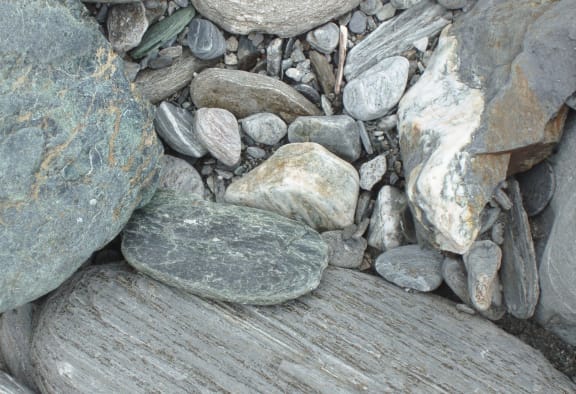New geological research into the movement of pounamu has found its stones move in a river like fish swimming upstream.

A riverbed in Westland Photo: SUPPLIED / Jason Tuhuru
GNS Science said the research in conjunction with the South Island greenstone's owner, Ngai Tahu, would help locate and protect the precious resource.
Principal GNS science geologist Simon Cox is a specialist on the South Island Alpine Fault, pounamu's ancient source on the western side of the Southern Alps.
He said pounamu was not like other minerals because it was always on the move.
"There is pounamu in hard rock occurrences, and in small slivers in mountain reefs, but most pounamu is found in the river bed, inside the gravels, in rocks rolling down the river."
"Unlike any other mineral resource, it gets moved in floods and buried and exposed, so there's the old law that you look for pounamu after a storm."
The research project
Dr Cox wanted to find out more about how the pounamu stones move, and where they are most likely to be found.
To do this he has run week-long surveys of West Coast rivers, analysis of geological maps, and an experiment involving a concrete mixer turning mixtures of rocks to see how they behave.

Dr Simon Cox Photo: SUPPLIED / Shane Lang
He said when he first started his research, he thought of pounamu as cascading down the mountains like the tears of Hinemoa, the rocks being washed downstream, and flowing out to sea.
He said that he now thinks of it differently.
"... Pounamu is harder and more dense than other rocks, and the other rocks break down while the pounamu tries to hang in there and stay in the rivers."
"It's a bit more like fish swimming up into the current and trying to stay where they are: they swim upstream moving backwards and forwards."
Dr Cox said GNS Science and particularly the stone's main kaitiaki and owner, Ngai Tahu, were already using this knowledge to locate pounamu hotspots.
A Ngai Tahu view
Ownership of all naturally occurring pounamu within Ngai Tahu's tribal area was returned to the iwi in 1997 as part of its Treaty settlement.
But until recently little of the stone previously taken had been handed in, instead circulating on the black market.
In the past two years Ngai Tahu has begun a pounamu accreditation scheme and a finder's fee system for miners of other minerals who bring it in.

Pounamu amongst pebbles in a riverbed. Photo: SUPPLIED / Jason Tuhuru
The chairman of West Coast runanga Ngati Waewae, Francois Tumahai, recently told Radio New Zealand that has been hugely successful, helping avoid the problems other countries are having managing their greenstone and jade.
"Pounamu has whakapapa, pounamu has mana.
"It seems overseas countries have lost their way in terms of their cultural connection to that taonga, and it's just been mined out.
"It's getting a lot scarcer, and the international jade price has gone up overseas, so they are now targetting us on the coast and us at Ngai Tahu."
He said it was a myth that pounamu was running out, but that its mana had to be protected.


